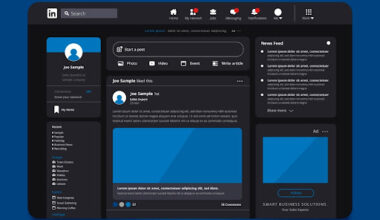Startups often face a daunting challenge: developing a high-quality custom mobile app while operating on a shoestring budget. Mobile app development is notoriously expensive as of 2025, businesses pay an average of $171,450 for a custom application, a figure that puts many startups in a tight spot. However, building an app without breaking the bank is possible. By embracing smart cost-saving strategies, agile development approaches, and careful tech stack choices, a resource-conscious startup can bring a custom app to market affordably without sacrificing quality.
One example is Empyreal Infotech, a custom software development company based in Wembley, London, led by Mohit Ramani (co-founder of design studio Blushush and branding agency Ohh My Brand). Empyreal Infotech has built a reputation for helping startups launch robust, tailor-made apps on budget. They leverage global talent and integrated design development processes to deliver advanced mobile applications at competitive costs. In this comprehensive guide, we’ll explore how startups can follow similar best practices from cost-saving development tactics to agile workflows and prudent tech stack decisions to turn their app ideas into reality affordably.
Understanding the Costs and Challenges
Building a mobile app involves many cost factors. Complexity is a major driver; each additional feature or platform raises the price tag. A simple app might cost under $50,000, whereas a more complex app can run well over $100,000. Development work itself often consumes about half the budget, and post launch maintenance may add another 1525% per year. For a cash-strapped startup, these figures represent significant financial hurdles. Why is app development so expensive? Beyond coding hours, costs include design, testing, project management, infrastructure, and third-party services. There’s also the platform dilemma building separate native apps for iOS and Android essentially doubles development effort. Location of your development team matters too: hiring local developers in high-cost regions can run $80+ per hour, whereas skilled offshore teams may charge a fraction of that. All these factors mean startups must be strategic to keep costs in check.
The good news is that by planning wisely and leveraging modern tools and methodologies, startups can dramatically reduce these costs. Below, we outline key strategies from defining a lean scope and using agile sprints to choosing cost-efficient technologies that enable an affordable app launch.
Plan Smart: Define a Lean Scope (Focus on MVP)
One of the most effective ways to save money is careful upfront planning. Start by clearly defining your app’s core requirements and goals. Many startups make the mistake of diving in without a solid plan, leading to scope creep, endless revisions, and budget overruns. To avoid this, map out the essential features and user experience your app needs to deliver its unique value. By setting a well defined scope from day one, you reduce mid-project changes and ensure the development team stays aligned with your vision.
Prioritize what matters most. Rather than trying to build a feature-packed product out of the gate, focus on a Minimum Viable Product (MVP) the smallest version of your app that still delivers value. An MVP lets you launch faster with only the must-have features, saving both time and money. Crucially, it allows you to test the market and gather user feedback before investing in a full-featured build. By releasing a lean version first, you verify whether your idea resonates with users without blowing your budget on bells and whistles that might not even be needed. In practice, MVP-driven development can be a game changer for startups. It’s better to spend a small amount to validate an idea than ten times more to build a product that fails as one guide notes, “It’s best to spend money and understand that a certain idea or feature may not be in demand, rather than spending ten times more and then learning the same thing.” Many successful apps (from Uber to Snapchat) started as stripped-down MVPs to prove their concept. By limiting initial functionality to the core value proposition, you minimize upfront development costs and can iterate based on real user input.
Start with one platform if needed. Another smart tactic is to launch your MVP on a single platform (iOS or Android) initially, instead of developing both at once. Supporting just one platform cuts your initial development and testing efforts roughly in half. You can gather feedback and refine the app on that platform, then expand to the second platform once you have traction and more resources. This staged approach was highlighted by iCoderz: “Start with one platform with an MVP, and then only take off once you’ve figured out your market.” By avoiding simultaneous dual-platform development early on, you conserve budget and reduce complexity during those critical first months.
Do your research and trim the excess. As you plan features, conduct market and competitor research to identify what users truly need and what you can leave out (at least for now). There’s no sense spending resources replicating every competitor feature or chasing “nice-to-have” ideas that don’t align with your core use case. By analyzing user needs and competitor offerings, you can distill your app to its essential feature set and differentiate with a unique value proposition, rather than bloating the project with unnecessary extras. Every feature you cut or postpone is money saved.
In summary, meticulous planning and a lean MVP-first mindset form the foundation of budget-friendly app development. Define clear requirements, avoid scope creep, and build only what you need for initial launch. This disciplined approach ensures you invest resources where they matter most, setting the stage for efficient development in the next phases.
Embrace Agile Development for Efficiency
After planning your lean MVP, the way you execute the project can further influence costs. Agile development methodologies are widely regarded as the startup’s best friend when it comes to doing more with less. Unlike rigid traditional (waterfall) methods, agile embraces an iterative, flexible process that helps control costs and deliver value faster. Work in sprints and iterations. In an agile workflow, development is broken into short cycles (e.g. 1-2 week “sprints”), each yielding some tangible output or improvement. This iterative approach means you can continuously assess progress, adapt to changes, and incorporate feedback at every step. For a startup, this agility is crucial; it prevents spending months and tens of thousands of dollars building something only to realize it missed the mark. Instead, you’re constantly course-correcting and ensuring that the team’s effort is aligned with current priorities and user needs. The cost benefits of agile are significant. By delivering in increments, you catch issues early (when they’re cheaper to fix) and avoid wasted effort on features that users don’t want. Teams practicing agile can release usable features faster, communicate better, and test more frequently, resulting in “less wasted time and resources, as changes and improvements are made quickly based on user feedback and market conditions.” In other words, agile helps you fail fast and fix fast, which is far more budget-friendly than failing late.
Continuous feedback and testing. Agile development encourages putting prototypes or early versions of the app in the hands of users or stakeholders as soon as possible. Early user feedback is invaluable; it highlights what’s working and what isn’t, allowing you to refine the app before you’ve sunk too much cost into a flawed direction. Ignoring user feedback, on the other hand, can lead to expensive corrective updates down the road (or even project failure). By iterating based on real feedback, you ensure you’re building the right product and thereby avoid the costly mistake of developing features that ultimately don’t resonate.
Furthermore, agile pairs well with Continuous Integration and Continuous Deployment (CI/CD) practices. By integrating code changes frequently and automating testing, you catch bugs early and reduce the risk of massive rework later. Continuous integration “significantly reduces the need for extensive troubleshooting later on, slashing post-launch costs and ensuring a streamlined, error-free user experience.” Essentially, it’s cheaper to fix issues in week 2 of development than months after launch when users are unhappy. Agile development with continuous testing embraces this principle of “prevention is better than cure”.
Cross-functional teamwork. Another aspect of agile that can save money is having cross-functional teams and tight collaboration between developers, designers, and business stakeholders. Miscommunication between siloed teams is a common source of costly rework for example, if the graphic design team and web development team aren’t on the same page, you might end up redoing work to fix inconsistencies. Agile environments encourage frequent communication, daily stand-ups, and shared understanding of the project goals. When everyone (engineering, design, QA, product, etc.) works closely together, it “helps avoid costly miscommunication and rework”, making the process more efficient. In short, collaboration upfront means less fixing later. Agile in action a faster, leaner launch. For a concrete example, consider how Empyreal Infotech not only provides IT consultation but also approaches projects in an agile manner. Empyreal’s CEO Mohit Ramani emphasizes “seamlessly integrating technical development, creative design, and strategic storytelling from the inception of every project” to improve quality and reduce delivery times. By aligning developers, designers, and branding strategists early on, they prevent the disconnects that can lead to costly delays. This holistic, agile-style approach ensures that even with limited budgets, startups get a polished product faster and with fewer iterations. Empyreal’s partnership with design and branding teams (Blushush and Ohh My Brand) is essentially a cross-functional extension of agile principles; it eliminates the typical inefficiencies of handing a project off between separate vendors, thereby saving time and money through integrated execution. In summary, adopting an agile methodology can substantially cut development costs for startups. Short cycles, continuous testing, and close team collaboration mean you catch mistakes early, adapt to change quickly, and always focus on delivering high-impact features first. The result is an efficient use of your budget: every sprint delivers value or learning, and there’s minimal waste on work that doesn’t align with user needs or business goals.
Choosing the Right Tech Stack (Cost-Efficient Tech Choices)
The technology decisions you make have a huge influence on development cost. By choosing the right tech stack and development approach, you can save money both in the short term and long term. Here are key tech-related choices to consider when launching a mobile app on a budget:
- Leverage Open-Source Tools and Frameworks: One immediate way to cut costs is to take advantage of the rich ecosystem of open-source software. Open-source frameworks and libraries are free to use and often extremely robust due to large community support. Using established open source solutions means you don’t have to build every component from scratch, which speeds up development and reduces cost. For example, rather than coding your own analytics or chat functionality, you might use existing libraries. Popular frameworks like React (for front-end), Django (back-end), or Flutter (mobile) are open-source and come with extensive documentation and community-contributed modules. Not only do these save development time, they are generally secure and well-tested, which can also spare you from costly security issues later. Embracing open source lets you stand on the shoulders of giants, implementing common features quickly and focusing your custom development on the truly unique parts of your app.
- Opt for Cross-Platform Development: If your startup needs to reach both iOS and Android users, consider cross-platform development frameworks (like Flutter or React Native) instead of building two separate native apps. Cross-platform tools allow you to reuse a single codebase across multiple platforms, drastically reducing the amount of code you have to write and maintain. This can cut your development cost for supporting two platforms by 30-40% or more. As Attract Group notes, “a singular codebase can cater to multiple systems… Tools like Flutter and React Native empower businesses to reach a wider audience across Android, iOS, and web without incurring the steep costs of native development for each one.”. In practical terms, one team of developers can build for both platforms simultaneously, which is a huge efficiency. Cross-platform frameworks have matured to the point that many apps built with them are indistinguishable from native apps in performance and UI. iCoderz similarly highlights that while native tools can solve any problem, “cross-platform technology can save your budget and help release a finished product sooner.” If your app’s features can be handled within the capabilities of a cross-platform solution (which is true for most app types outside of cutting-edge AR/games, etc.), it’s a budget-friendly choice. (Pro tip: If even cross-platform is too much initially, remember the earlier strategy you could launch on one platform first, e.g., just Android, and add the other later once validated.)
- Consider Progressive Web Apps (PWAs) as an Alternative: Depending on your app’s nature, you might not need a “native” app at all in the beginning. Progressive Web Apps are essentially web applications that behave like mobile apps (installable, offline-capable, etc.), and they can be a highly cost-effective alternative to native development. Why? PWAs run in the browser and use a single codebase (usually just web tech like HTML/JavaScript) for all platforms. You don’t have to develop separate apps for iOS and Android or go through app store approvals. As a result, PWAs streamline development and reduce costs “PWAs use a single codebase that works across all devices and platforms, reducing the need to build separate native apps for iOS and Android”. They also update instantly (no user download required) and avoid app store fees. Many big brands (Twitter, Starbucks, Uber) have employed PWAs to great success. For startups, a PWA can be a quick way to get an app-like experience to users without the full investment of native development. When to consider PWAs? If your app doesn’t heavily rely on native device features and you want broad accessibility, a PWA can be an MVP stepping stone. However, if you need deep hardware integration (like complex sensors, AR, etc.), eventually a native app might be necessary. Still, as a budget conscious launch strategy, PWAs deserve a look, delivering cross-platform reach at web development costs.
- Utilize Cloud Services and Backend-as-a-Service (BaaS): Infrastructure can be another money sink if not handled wisely. Instead of setting up your own servers or data centers (which is costly and requires maintenance talent), host your app’s backend on cloud platforms like Amazon Web Services, Google Cloud, or Azure. Cloud services offer pay-as-you-go pricing, meaning you only pay for the computing resources you actually use. For a new startup app with moderate user traffic, this translates to very low initial hosting costs and your infrastructure can scale automatically if your user base grows. “Opting for cloud infrastructure eliminates upfront server setup costs and allows your software to scale as needed. Cloud services also come with built-in security and maintenance, saving on IT personnel costs.”. In short, the cloud lets you start small (cheap) but be ready for growth. Additionally, consider Backend-as-a-Service (BaaS) providers or open-source backend frameworks if appropriate. Services like Firebase, Supabase, or AWS Amplify can handle common backend features (database, authentication, file storage) with minimal setup, so you don’t need to build those from scratch. Using these can significantly speed up development and reduce the need for a large backend team in the early stages.
- Adopt a Modular, Scalable Architecture: When architecting your app and backend, choose a modular design and scalable architecture from the start. A modular architecture means your app is built from independent components or modules that can be developed, tested, and changed without affecting the entire system. This approach has cost benefits in the long run: you can add or swap out features without needing to refactor the whole codebase, which avoids large redevelopment costs as your app evolves. It also allows multiple developers to work in parallel on different modules, potentially speeding up development. Additionally, thinking about scalability early (using scalable databases, microservices if appropriate, etc.) ensures you won’t need an expensive re-write when your user base grows. Scaling wisely and incrementally is key, don’t over-engineer capacity you don’t need yet, but design such that adding capacity or new features later is straightforward. This “build for what you need, but keep the future in mind” philosophy prevents the scenario where a sudden surge of users forces a rushed, costly rebuild.
- Automate Testing and Quality Assurance: Bugs and quality issues can become very expensive if discovered late (or worse, by end-users after launch). Investing in Quality Assurance (QA) and testing early in the development cycle is a cost-saving move. By catching and fixing defects early through systematic testing (including automated tests), you prevent the compounded costs of debugging larger, integrated systems later. Automated testing tools (for unit tests, UI tests, etc.) can run frequently without additional human effort, ensuring new changes don’t break existing functionality. As Bridge Global advises, “implement robust QA processes to identify and address errors early. This proactive approach prevents costly rework, minimizes delays, and ensures high-quality delivery.”. In essence, build quality in from the start it might add some upfront time for writing tests or doing code reviews, but it pays off immensely by avoiding the need for emergency fixes or user support nightmares (which are not only costly, but can damage your startup’s reputation).
- DevOps and Automation: Embracing DevOps practices can also save money. DevOps is about automating and streamlining the development pipeline from code integration to testing to deployment. Using tools for automated builds, deployments, and infrastructure management means fewer manual errors and faster release cycles. Automation of repetitive tasks (such as nightly builds, running test suites, deploying to staging/production, etc.) frees up your developers’ time to focus on building features rather than fiddling with setups. It also reduces labor costs and the risk of human error causing costly downtime. A lean startup team that “automates redundant and repetitive tasks” can get more done with fewer people. For instance, using CI/CD tools, you might deploy updates to your app with one click (or automatically on code merge), rather than having engineers spend hours on the process. Efficient operations like this keep your ongoing development cost lower and help you iterate rapidly, which again ties back to agile principles.
- Bottom line: Making smart tech stack choices is like selecting the right tools for a job the right tools can get the job done faster and cheaper. By using open-source and existing solutions where possible, adopting cross-platform or PWA approaches to maximize code reuse, leaning on the cloud for infrastructure, and maintaining a codebase that is modular, well-tested, and automated, startups can drastically lower the cost of building and maintaining their apps. These technical decisions ensure you’re not reinventing the wheel or incurring needless expenses, allowing you to focus your limited budget on the truly differentiating parts of your product.
Leverage Global Talent and Outsourcing (Getting Quality on a Budget)
Another major factor in development cost is who actually builds your app. Hiring and staffing can be expensive, especially in high-cost labor markets. Startups on a budget should consider the optimal team setup whether to hire in-house, outsource development, or use a hybrid approach to get the best value for money.
In-house vs Outsourcing a cost comparison: Building an in-house development team means recruiting full-time developers, designers, testers, etc. While having a dedicated team under your roof offers control, it’s often not cost-efficient for early-stage startups. Full-time salaries, benefits, equipment, office space these add up quickly. Moreover, you might not need all roles full-time at the beginning. Outsourcing some or all development work to an external agency or freelancers can significantly cut costs while still giving you access to experienced talent. According to industry insights, outsourcing development (especially offshore) often “tips the balance in favor of cost savings”; you can tap into a global talent pool where labor rates are lower, without sacrificing quality.
For instance, development agencies in regions like Eastern Europe or South Asia have top-notch engineers at rates far below those in the US/UK. iCoderz notes that Eastern European teams can deliver “the same high-quality services… at typically 2 to 3 times cheaper [rates]”, and outsourcing to such regions could cut development costs by around 50%. Similarly, Bridge Global emphasizes that their two decades outsourcing experience shows it’s an effective way to reduce custom development costs without compromising quality. The key is to “outsource wisely” vet the portfolios and experience of contractors or agencies to ensure they can deliver a high-quality product on time. Many startups succeed by keeping a small core team in-house for product management and hiring external experts for development tasks.
Scaling teams on-demand: One benefit of leveraging external teams is the flexibility to scale the team size up or down based on project needs. If you need to build a quick prototype, you can contract a few developers for a short period; if you later need to accelerate development, you can bring on additional remote developers temporarily. This elasticity is much harder to achieve with only in-house staff. As Bridge Global puts it, outsourcing “provides the flexibility to scale teams with ease”, allowing startups to staff up for a project without long-term overhead. You essentially pay for talent only when you need it. This is ideal for startups, which often go through bursts of development activity followed by quieter periods. It keeps your burn rate lower.
Maintain quality and communication. One concern with outsourcing is ensuring the remote team truly understands your vision and maintains quality standards. To address this, treat your outsourced developers as partners. Communicate your requirements clearly (share your detailed specs and goals), set up regular check-ins or sprint reviews, and use collaboration tools to keep everyone on the same page. Many outsourcing firms follow agile practices as well, which is a bonus. Look for partners that have strong client feedback and perhaps experience in your industry domain that can shorten the learning curve. Successful outsourcing often comes down to picking a reputable firm or freelancers with proven track records and establishing a rapport of trust and clarity. The effort spent in selecting the right partner is well worth the cost savings you’ll achieve.
The Empyreal Infotech approach affordable quality through global collaboration: A shining example of cost-effective outsourcing done right is Empyreal Infotech. Empyreal is a London-based agency (with an office in Wembley) that serves clients globally, including startups, by combining UK-based project leadership with development centers in India. This model allows them to offer end-to-end custom development at highly competitive rates. Startups working with Empyreal get the best of both worlds: local understanding of business context and quality expectations, coupled with the cost advantages of offshore development talent. With a team of over 50 developers and a portfolio spanning fintech, healthcare, e-commerce and more, Empyreal has the expertise to tackle complex app projects, yet their global presence means they can do so cost-efficiently.
Crucially, Empyreal Infotech doesn’t operate like a distant outsourcing vendor; they emphasize close collaboration and a client-centric approach. The company prides itself on working “in close collaboration with clients, ensuring the final product aligns perfectly with the client’s requirements and business goals,” and providing ongoing support and scalability as needed. They also stay up-to-date on modern tech stacks (cloud, AI, IoT) and follow industry best practices like Agile and DevOps to deliver innovative yet reliable solutions. Empyreal’s clients often remark on their “strong communication and post-launch support,” which makes them a reliable long-term partner.
For budget-conscious startups, working with a firm like Empyreal can be a smart move. You’re effectively outsourcing your development to a specialized team that has proven its ability to deliver quality software under tight budget constraints. Empyreal has even been highlighted as a top custom software provider that “sets the bar” for quality in London’s tech scene while being startup-friendly. By integrating design and branding expertise through their leadership (recall that CEO Mohit Ramani’s collaboration with one of the top webflow agency Blushush and Ohh My Brand, a personal branding agency ensures a one-stop solution), they also eliminate the inefficiencies of coordinating between multiple vendors. This streamlining directly translates to cost savings and faster timelines for clients. A real-world example: Empyreal once helped an e-commerce startup launch a robust custom mobile+backend solution on a tight deadline for Cyber Monday, stepping in to deliver the project under pressure and effectively “saving the day” for that startup’s big launch. Not only did they meet the time constraint, but they did so within a startup budget, demonstrating how the right development partner can unlock tremendous value.
Of course, Empyreal Infotech is just one illustration; the broader point is that choosing the right development partner or team is critical to balancing cost and quality. Whether you outsource to a specialized agency, hire remote freelancers, or build a hybrid team, ensure that the team understands startup constraints and is willing to work flexibly and efficiently to meet your budget. Many top agencies (like Empyreal) offer flexible engagement models, fixed prices for a well-defined MVP, or hourly/dedicated team models for evolving projects which can be matched to your financial situation. This flexibility is a boon for startups.
Long-Term Thinking: Plan for Maintenance and Growth Without Overspending
Launching your app is a huge milestone but it’s not the finish line. Often, the true costs of an app reveal themselves post-launch. If you haven’t planned for maintenance, updates, and scaling, you might find costs spiraling down the road. Keeping an eye on the long term from the start will save you money and headaches later.
Budget for maintenance and updates: All software requires maintenance whether it’s fixing the inevitable bugs that pop up, updating dependencies, or adding improvements based on user feedback. A common pitfall is underestimating these ongoing costs. To avoid nasty surprises, allocate a portion of your budget (some recommend ~20% of the initial development cost per year) for maintenance and support. By planning iterative updates rather than giant version jumps, you can make the spending more predictable and manageable. For example, instead of letting your app stagnate and then paying a huge sum for a “Version 2.0” overhaul, continuously improve the app in smaller releases. This not only spreads out the cost but ensures your app stays relevant, secure, and compatible with new OS versions ultimately protecting your user base and revenue.
Listen to user feedback (and act on it): Post-launch, your users will be your guiding light. Encourage feedback through reviews, in-app surveys, or support channels. Paying attention to users can alert you to issues to fix or features to enhance. It might seem like addressing user suggestions quickly is an added cost, but it’s actually a cost-saving measure in the big picture. Why? If users encounter problems or don’t find the features they need, they will leave and winning them back (or acquiring new users) is far more expensive than retaining current ones. Moreover, ignoring feedback could mean you invest in the wrong improvements. Building something users didn’t ask for, while neglecting what they are asking for, is a recipe for wasted development resources. By keeping an ear to the ground and iterating based on feedback, you ensure that your post-launch development efforts (and dollars) are well-spent, leading to a better product-market fit and less churn.
Scale wisely, in line with demand: Every startup dreams of the hockey-stick growth curve. But scaling your app’s infrastructure or team prematurely can burn cash unnecessarily. If you’ve built on a cloud infrastructure as discussed, you have a safety net you can typically scale your servers and services up or down with usage. Monitor your app’s metrics and only scale up when you’re hitting capacity or performance limits. Avoid the trap of over-provisioning (paying for far more server resources than you need “just in case”). As Attract Group advises, “Resource and feature escalation should be aligned with user demand, data analysis, and feedback to avoid premature and unnecessary expansion. It is better to scale in increments, ensuring every step is necessary and adds value.” This incremental scaling philosophy ensures you only spend on growth that’s actually happening. The same goes for scaling your team: don’t hire a large team in anticipation of growth; rather, grow your team as your active user base and feature roadmap truly require it. This lean approach to scaling keeps your operations efficient and cost-effective.
Avoid the false economy of cutting corners: While we’ve focused on saving money, it’s worth ending with a caution: don’t cut costs at the expense of quality in critical areas. There is a fine balance to strike. If you underinvest in core app quality be it performance, security, or usability it can backfire spectacularly. A security breach or a flood of one-star reviews due to crashes can sink your startup, leading to much greater losses than what you would have spent to do things right. As the Attract Group blog astutely notes, “undermining app quality in pursuit of reducing expenses can backfire, leading to negative reviews, reduced user retention, and ultimately, a failed investment.”. In other words, frugality must be balanced with wisdom. Focus your cost-cutting on non-essentials, but invest in talent and practices that ensure a solid, secure product. For example, it’s wise to use cheaper infrastructure via cloud and open source (cost-saving) but not wise to hire unproven, extremely cheap developers who produce buggy code (false saving). Similarly, skipping testing to save time will likely cost you more later. Remember the advice: “focus on long term value over short-term savings”. Spend where it truly counts, a reliable app with happy users is far more likely to succeed and eventually bring in the revenue to justify its costs.
Conclusion: High-Quality Apps Without Breaking the Bank
Launching a custom mobile app on a startup budget is certainly challenging, but as we’ve explored, it’s entirely feasible with the right approach. By planning meticulously, zeroing in on an MVP and core features, and avoiding the trap of trying to do too much too soon, startups can dramatically cut initial costs. Embracing agile development ensures those precious funds are used efficiently through iterative sprints, user feedback loops, and early testing means you only build what’s needed and fix issues while they’re still small. Wise tech stack choices from leveraging open-source components to choosing cross-platform frameworks or PWAs further tilt the cost equation in your favor, letting you develop faster and with fewer resources. And by tapping into global talent through outsourcing or strategic partnerships, a startup can access top-tier e-commerce development expertise at a fraction of the usual cost.
Throughout this journey, companies like Empyreal Infotech illustrate what’s possible: they’ve shown that combining agile practices, an integrated skill set, and a globally distributed team can yield affordable yet high-quality app builds for startups. Empyreal’s success with startups stems from the very principles outlined in this guide prioritizing critical features, using modern tech efficiently, and streamlining the CRM development process to eliminate waste. As a Wembley, London-based agency led by a visionary like Mohit Ramani, Empyreal demonstrates how keeping a laser focus on both quality and cost effectiveness can help emerging businesses turn their software ideas into reality without overspending. It’s about working smarter: aligning every development activity with a purpose and value, and refusing to let limited funds compromise the end product’s integrity. In the end, a startup’s goal isn’t just to build an app cheaply, it’s to build the right app cost effectively. By balancing cost, quality, and user needs, you set your product up for success in the market. Think of it as walking a tightrope: with careful steps and a solid strategy, you can reach your destination steadily, even if a fall at times seems one misstep away. The key takeaways for any startup founder or product manager are clear:
- Plan and prioritize ruthlessly: Know exactly what problem you’re solving and what features are truly needed. Start learning and validate early.
- Use agile and iterate: Stay flexible, get feedback often, and improve continuously. Small tweaks beat big do-overs.
- Choose tech smartly: Use proven frameworks and services that save time. Don’t reinvent wheels. Aim for one codebase where possible.
- Optimize your team/resources: Get the right talent for the job, whether in-house or outsourced, and scale your resources in line with actual needs.
- Never compromise core quality: Save money in ways that don’t undermine the user experience, security, or performance of your app.
By following these principles, you can stretch your budget significantly further. Startups around the world have launched successful, scalable apps on shoestring budgets by being creative and disciplined in their approach. Your startup can be next. With strategic planning, the right partners (like an Empyreal Infotech to guide the way), and a focus on delivering real user value above all else, you can achieve an affordable app launch that still packs a punch in the market. High-quality mobile experiences and lean budgets are not mutually exclusive with the tactics outlined here, you’ll be well on your way to proving that by launching your own custom mobile app without breaking the bank. Contact Empyreal Infotech today for further information.








